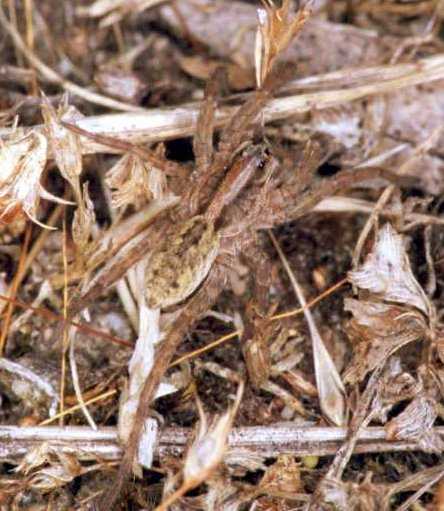
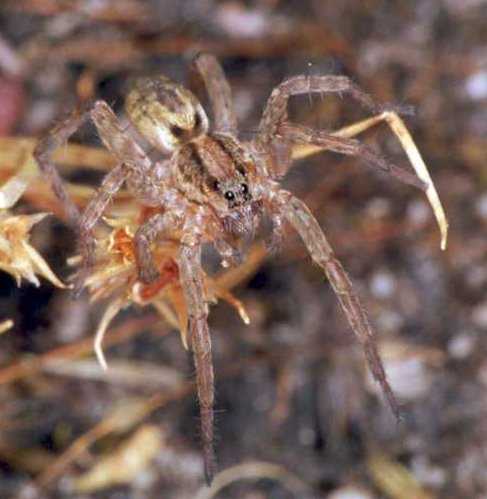
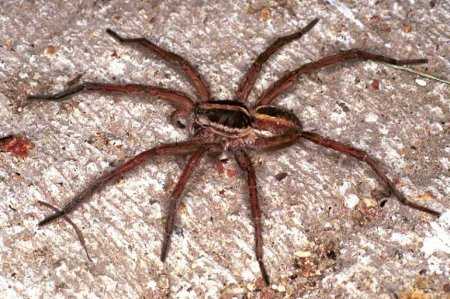
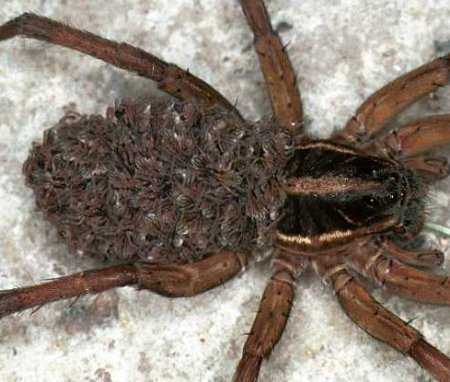
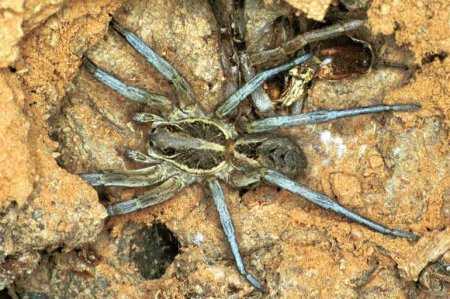
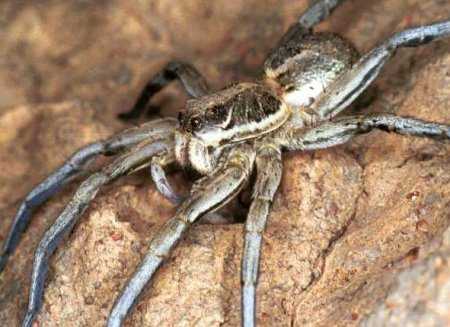
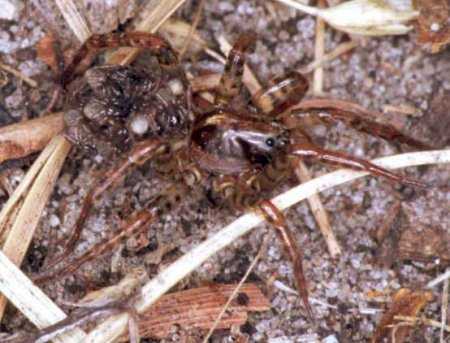
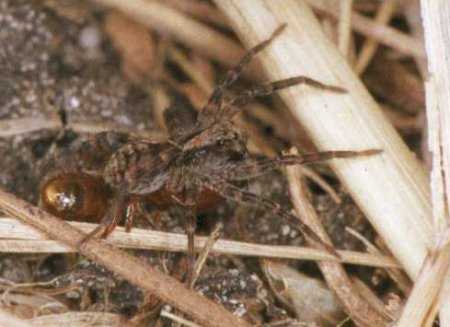


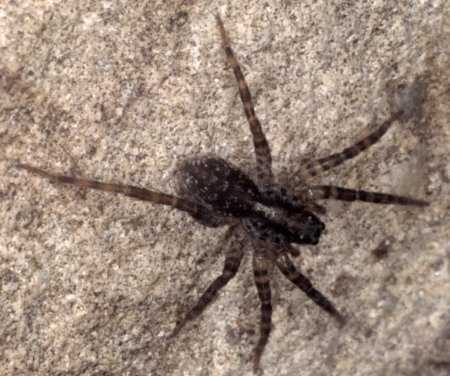
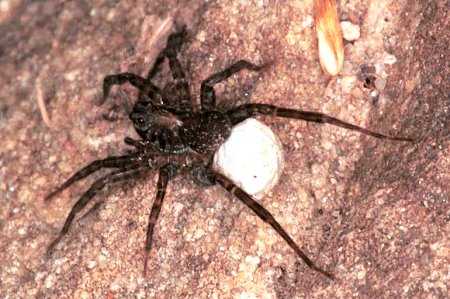

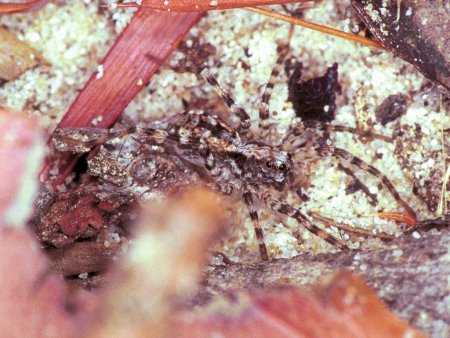
Wolf & Nursery web spiders
Family Lycosidae -------- Family Pisauridae
Wolf spiders or Lycosidae are easily recognized by the female carrying their egg sacs attached at the back of her abdomen. The youngster live for some time on the females abdomen as can be seen on this page. They live on the ground and move very fast. Their size is between 10 and 40 mm. There are nine genera with 130 described species.
Pisauridae or nursery-web spiders are a family with 10 genera and 25 described species. All are large spiders and can measure up to 30 mm. They can be found near and on water. In contrast to the Lycosidae, they carry their egg-sac with their palps and chelicerae.
Both Lycosidae and Pisauridae are closely related.
ß Home
Family Lycosidae
These spiders are real hunters and have excellent eyesight. They are rather
big and are easily spotted on places in the sun often at damp places. If you
spot spiders speeding away on the ground and several spiders have white sacs
attached to their spinnerets at the back of their body you can be sure you deal
with wolf spiders.
Their name "wolf spider" is derived from the fact that people erroneously thought
they hunted in groups like wolves. In Australia there are 130 descibes species
in nine genera.
The spider lives in every variety of terrestrial habitats. They can even been
found on the water skating over it and even diving under the surface catching
small fish and insects. Some of these spider fish, by putting one of their legs
into the water. If a fish is attracted and wants to catch the bait the spider
catches it.
The cephalothorax (head-breast part) is elongated and usually high and narrowed
in the front. They have eight eyes. Four small ones are located at the lower
part of the face. Immediately above these there are two large eyes looking forward
and father back there are also two big eyes that look upward. In this way the
spider can look in four directions and can perceive moving insect at a distance
of several inches. The legs and chelicera (jaws) are robust. The spider vigorously
attacks her prey crushing it with her stout chelicera.
The majority of the genera carry their eggs in an egg sac attached at the back of their abdomen. Some genera (Arctosa, Trochosa and Alopecosa) keep their eggs under the ground in web coated holes or tubes. The youngsters crawl on top of the abdomen of the mother and stay there until they change their skin for the first time. The female spider is a creature with a variable temper. Notorious for her rapacious activities, she displays solicitude for her eggs and young that can scarcely be met by any other spider. Her egg-sac, attached to her spinnerets, is a precious thing she will defend with her life. Her instinct is very powerful but she also can be easily fooled. When her egg sac is changed for something artificial, like a piece of cork or a wad of paper or cotton, she also will defend the artificial sac with her life. After two or three weeks, her young develop to a point where they can leave the sac. The mother bite open the sac and within a few hours all the young has climbed on the abdomen where they will stay until their first change of skin. During that time the mother will engage her normal hunting activities with her young tightly attached to her body. When the young are brushed from her body they will crawl back very quickly. In the time the young are attached at the body of their mother they do not eat. Their bodies are supplied with enough food to live during this period. The youngsters do drink water during their stay by drinking dewdrops in the morning.
Genus Lycosa, Pardosa, Arctosa and others?
 |
 |
| Lycosidae ZZ130, Halls Gap, Victoria | Lycosidae ZZ130, Halls Gap, Victoria |
 |
 |
| Lycosa furcillata, male, Giru, Queensland | Lycosa furcillata, female with youngsters |
 |
 |
| Lycosa musgravei, Marabee, Queensland | Lycosa musgravei, Marabee, Queensland |
 |
 |
| Lycosidae ZZ142, Crampians, Victoria | Lycosidae ZZ145, Warrnabool, Victoria |
 |
 |
| Pardosa ZZ144, Warrnambool, Victoria | Lycosa pictiventris, Brisbane, Queensland |
 |
 |
| Lycosa ZZ160, Carnavon, Queensland | Lycosa ZZ160, Carnavon, Queensland |
 |
 |
| Arctosa? ZZ141,Crampians, Victoria | Arctosa? ZZ141,Crampians, Victoria |
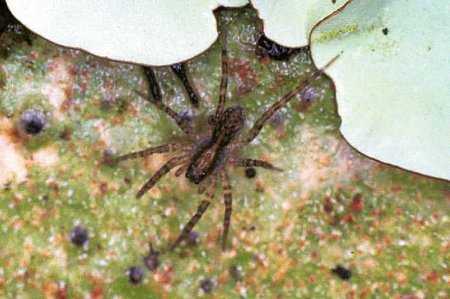 |
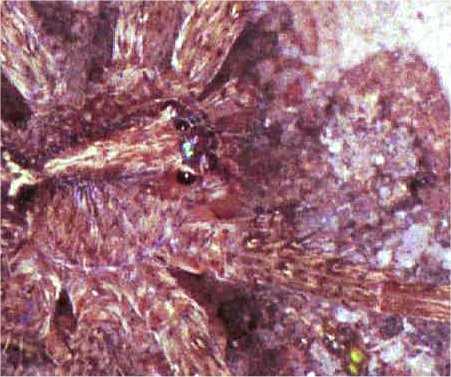 |
| Lycosidae ZZ159, Palmerstone park, Queensland | Lycosidae? ZZ162, Katherine, Northern Teritory |
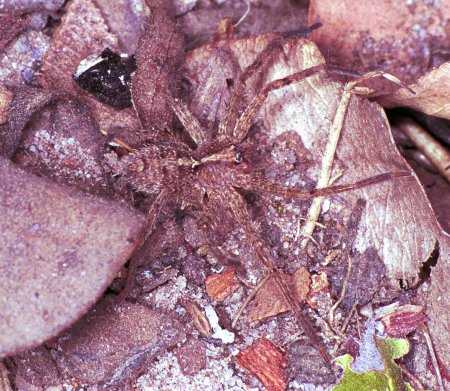 |
 |
| Lycosidae? ZZ162, Katherine, Northern Teritory | Lycosidae? ZZ162, Katherine, Northern Teritory |
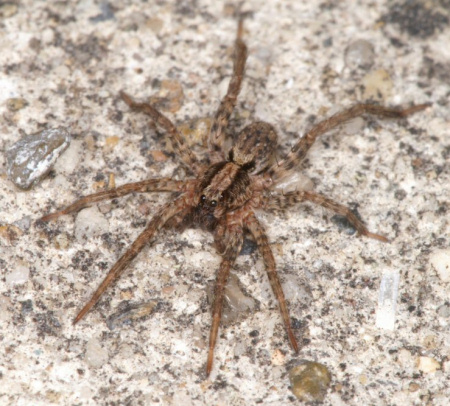 |
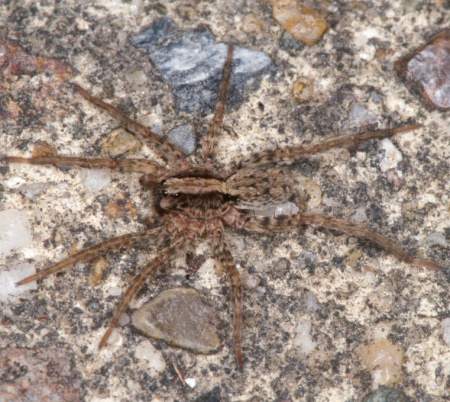 |
| Lycosa ZZ359 Brisbane | Lycosa ZZ359 Brisbane |
Family Pisauridae
This family consists ten genera and 25 descibed species. The genus Dolomedes is the most commonly occuring genus and most species are placed in this genus. This family is closely related to the wolf spiders (Lycosidae). They are large spiders measuring up to 30 mm.
Genus Dendrolycosa

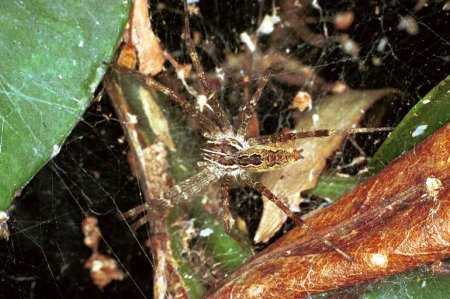
Dendrolycosa icadius
This spider constructs its horizontal, non-sticky web in trees, with usually waxy leaves, on which it hunts. This spider was found in Litchfield, Northern Teritory and Maurilyan harbour, Queensland.
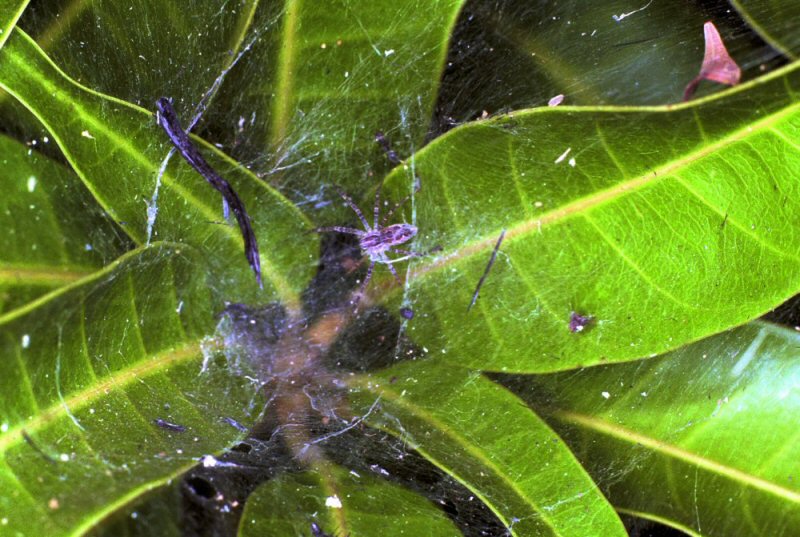
Genus Dolomedes
These spiders can be found near water. They are very large spiders and may
measure up to 25 mm without legs. The spider catches insect, fish and salamanders.
Their breeding care is exceptional. If a mother is separated from their eggs
she will return to the spot even if she it carried away for 200 meters. The
spider sits on vegetation at he edge of pools. If the spider is disturbed it
will flee into the eater and will hide under water between the vegetation for
almost an hour. If the spiderlings emerge from their nursery tents they often
exploit higher and dryer habitats and may be found in bushes and trees.
More here: Big wolf and nursery webspiders
 |
|
| Dolomedes minor from New-Zealand | |
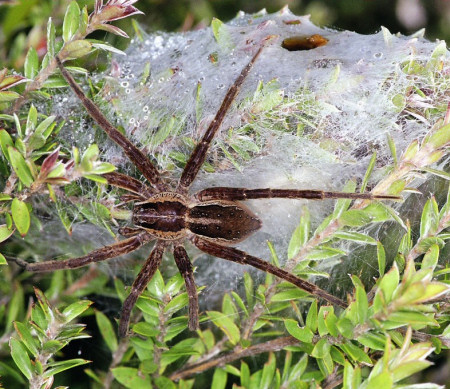 |
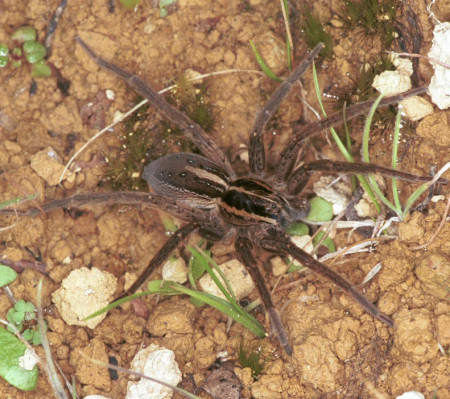 |
| Dolomedes minor guarding her nest | Dolomedes minor |
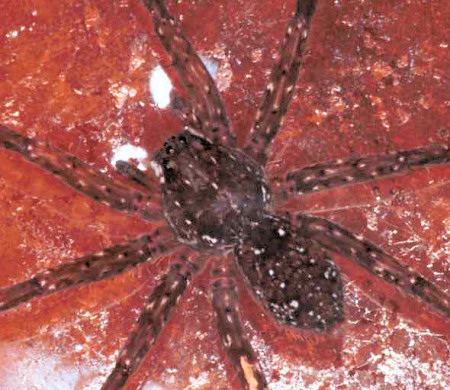 |
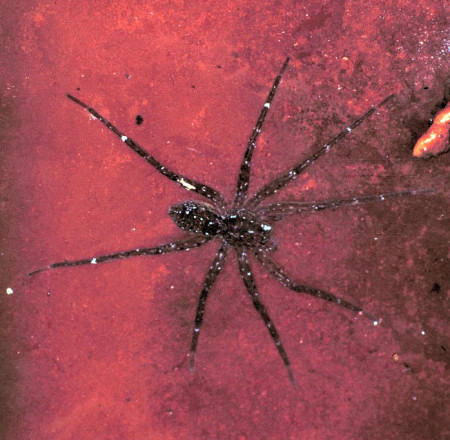 |
| Dolomedes ZZ161 walking on the water surface, Carnavon, Queensland | Dolomedes ZZ161 |
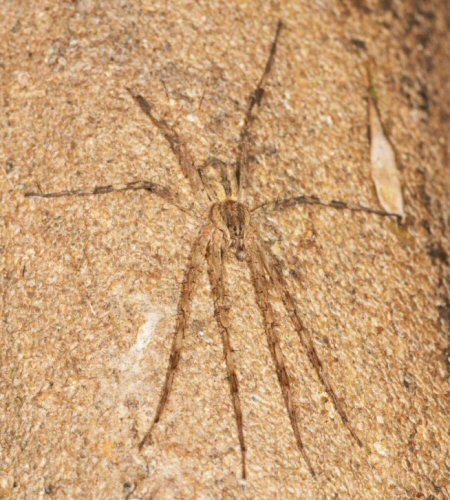 |
|
| Dolomedes ZZ288 (Jurgen Otto,Townsville) |
Genus Hygropoda
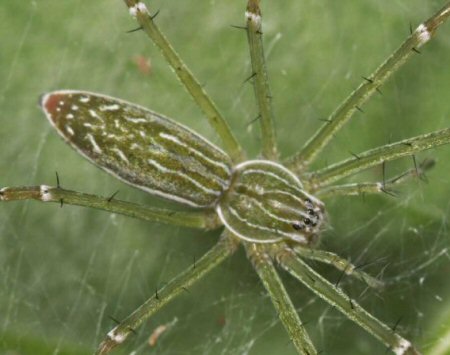 |
 |
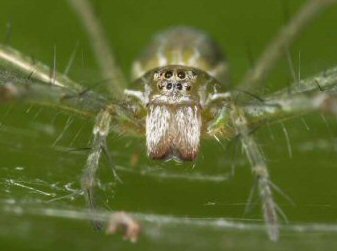  |
|
| Hygropoda dolomedes or Hygropoda dolomedes (Jurgen Otto,Townsville) | |
This spider constructs a thin horizontal non-sticky sheet web above waxy leaves like Dendrolycosa. The webs are usualy on one leave. |
|
ß Home
Ed Nieuwenhuys, 28 june 2010
januari 4, 2009 ,
Ronald Loggen 1997, March 2005
Copyright ã 1997-2010